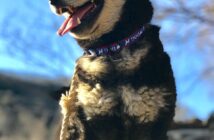Introduction: The First Step to a Healthy Shiba Inu
Adopting a Shiba Inu is an exciting and heartwarming journey. But before you get too carried away by their fox-like charm, it’s crucial to focus on their health—especially right after adoption. Many Shiba Inus in rescues come with undiagnosed or hidden medical issues. Knowing what to watch for and taking early action can make a huge difference in your dog’s quality of life.
This article will guide you through the common post-adoption health issues in Shiba Inus, provide a vet screening checklist, and help you understand when to visit a vet—even if everything seems okay.
Common Rescue Health Problems in Shiba Inus
Rescue dogs often come from challenging backgrounds—neglect, poor breeding practices, or abandonment. Shiba Inus, in particular, may suffer from:
1. Parasites and Flea Infestations
Many rescued Shibas have internal parasites like roundworms or giardia, or external issues like fleas and ticks. Left untreated, these can lead to serious conditions like anemia or gastrointestinal problems.
➡️ Tip: Ask if your rescue performed deworming and flea treatment.
2. Skin Conditions (Allergies, Dermatitis)
Shibas have sensitive skin. Allergies, hot spots, and mange are often seen in rescues. If your new dog is itching or has red, flaky skin, it’s time to see a vet.
📷 Real Case: Emma, a 2-year-old rescue from Shiba Inu Rescue of Texas, had severe skin allergies from poor diet and flea infestation. After transitioning to a hypoallergenic diet and prescribed antihistamines, her coat fully recovered within three months.
3. Dental Disease
Tartar buildup, gingivitis, or missing teeth are common in neglected dogs. Dental issues can lead to heart and kidney problems if not addressed.
🔎 Did You Know? The American Veterinary Dental College reports that 80% of dogs over age 3 have some form of dental disease.
Source: AVDC Dental Statistics
4. Patellar Luxation
A hereditary condition where the kneecap slips out of place. It’s common in small breeds like Shibas. Look for limping or skipping steps during walks.
5. Heartworm or Tick-Borne Diseases
Heartworm is common in rescues from southern states. A heartworm test should be standard before adoption.
📌 Fact: According to the American Heartworm Society, heartworm disease has been diagnosed in all 50 states.
Source: American Heartworm Society
Veterinary Screening Checklist (First 30 Days)
Make your first vet visit count by asking for this complete health screening:
| Checkup Category | What to Ask For |
|---|---|
| 🧪 Blood Tests | CBC, heartworm test, tick-borne illness panel |
| 💩 Fecal Exam | To check for worms, giardia, coccidia |
| 🦷 Oral Exam | Look for gum disease, missing/broken teeth |
| 🧬 Genetic Tests | Consider Fanconi Syndrome or glaucoma screening (for purebreds) |
| 🐕🦺 Musculoskeletal | Check for luxating patella or hip issues |
| 🦠 Vaccination Review | Confirm rabies, DHPP, bordetella status |
👨⚕️ Expert Tip: Dr. Lauren White, DVM in Portland, OR, recommends, “Even if your adopted Shiba appears healthy, schedule a full wellness exam within 7 days. Early detection of hidden issues can prevent expensive emergencies down the road.”
When to Visit a Vet Post-Adoption (Even if They Seem Fine)
Here’s a practical guideline for knowing when to visit a vet—even if your Shiba Inu looks healthy:
| Symptoms | Action |
|---|---|
| 🛏️ Low energy for more than 2 days | Schedule a visit |
| 🍽️ Refuses food or water for 24+ hours | Immediate vet care |
| 💩 Diarrhea/vomiting for 48+ hours | Visit vet—could be parasites or infection |
| 🐾 Excessive scratching/biting | Check for allergies or mites |
| 🦷 Bad breath, loose teeth | Book dental screening |
🔍 Pro Insight: Many early signs of illness in Shibas are subtle. A shift in behavior—like hiding, growling during touch, or suddenly avoiding stairs—can be an early warning.
Why Early Detection Matters: A Case Study
Case: Luna, Age 4 – California
Luna was adopted from a Northern California rescue. During the first few weeks, she seemed shy but healthy. Her adopter noticed she was limping on walks. A vet visit revealed Grade II patellar luxation and mild arthritis. Early treatment with supplements and adjusted exercise prevented the need for surgery.
🏥 Outcome: With early vet intervention, Luna avoided long-term mobility issues and is now thriving.
Preventive Health Tips After Adoption
- 🐾 Feed a balanced, high-protein diet to support coat and muscle health.
- 🐕 Use monthly flea/heartworm prevention like NexGard or Heartgard.
- 🧴 Bathe with oatmeal or medicated shampoo if your Shiba has itchy skin.
- 🧘 Monitor stress levels, as stress can suppress the immune system.
- 📅 Set up annual wellness exams—they catch silent issues early.
Conclusion: Your Role in Their Health Journey
Adopting a Shiba Inu is a big-hearted move—but it also comes with responsibility. Being proactive about health screening, early vet visits, and daily observation ensures your new companion doesn’t just survive post-adoption—they thrive. With the right care from the start, even a previously neglected Shiba can become your happiest, healthiest sidekick.



